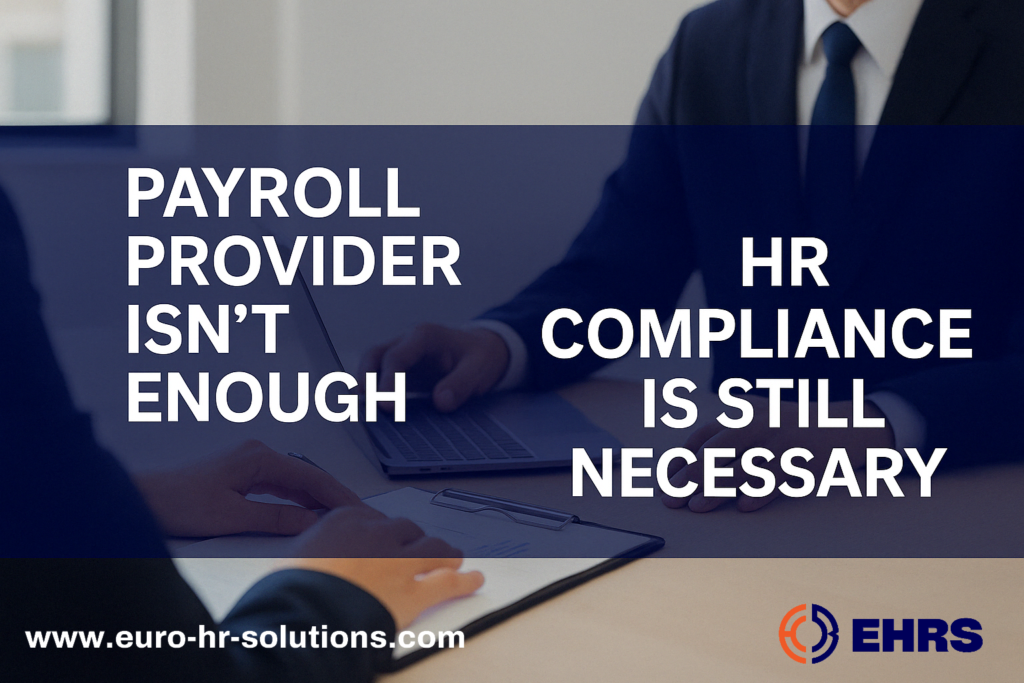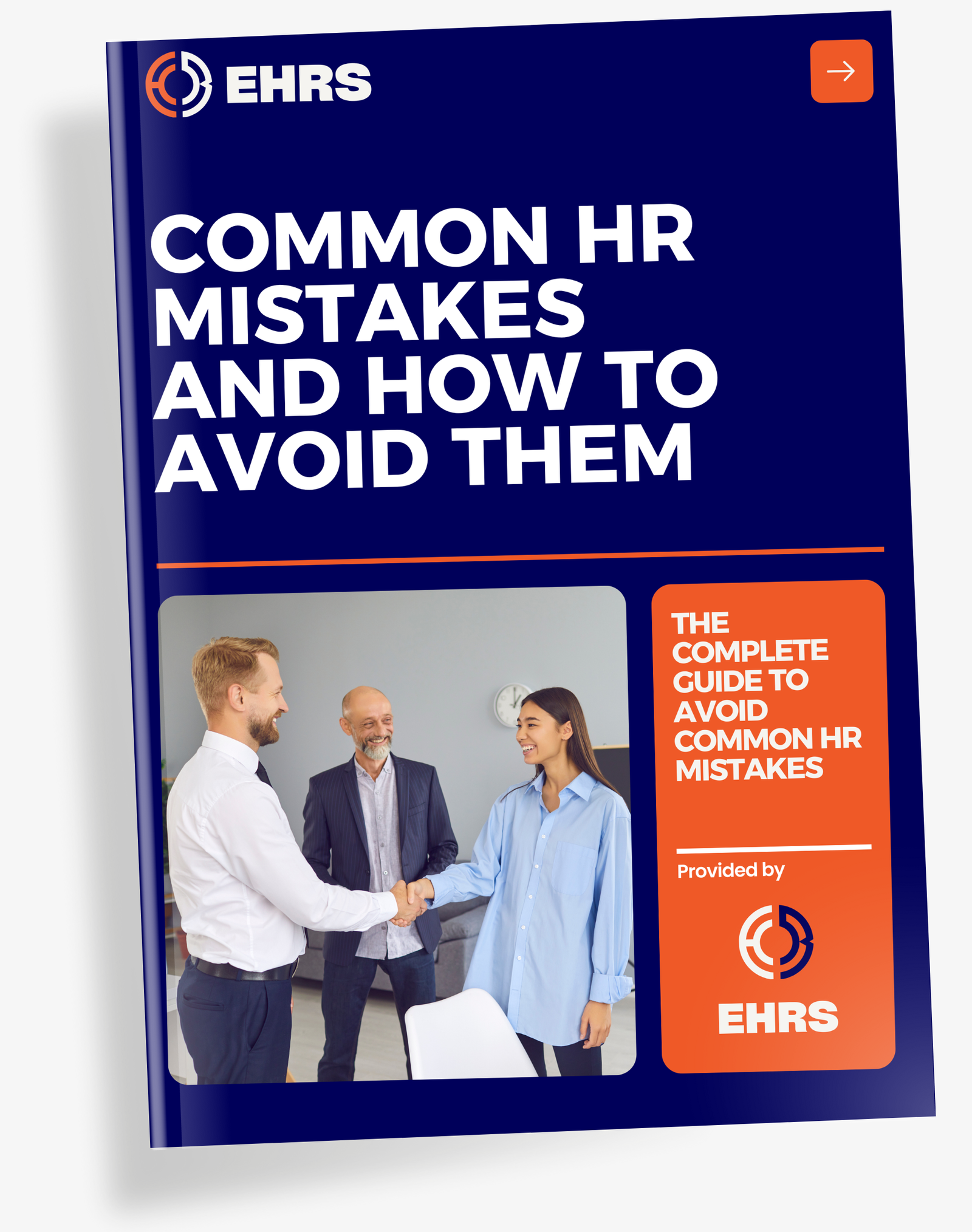Running payroll across multiple countries doesn’t guarantee compliance with employment law – yet 73% of organizations assume their provider handles all HR legal risks.
This article exposes significant shortcomings in tax calculations, employee classification, and wrongful termination practices that leave businesses vulnerable to six-figure penalties. Discover why embedding jurisdictional compliance oversight alongside payroll systems has become non-negotiable for global employers in 2024.
Table of contents
- Where Payroll Systems Fall Short
- Real-World Compliance Risks
- Building a Comprehensive Compliance Framework
- Implementing Proactive Compliance Measures
Where Payroll Systems Fall Short
Employment Law Blind Spots
Payroll providers excel at tax calculations but often lack expertise in evolving employment legislation. Their systems typically ignore jurisdictional variations in overtime rules, worker classification standards, and mandated leave policies. This creates compliance gaps even when payroll processing appears flawless.
Recently, a transportation company faced $1.2M in penalties after their provider failed to account for California’s ABC worker classification test.
Misclassified contractors became entitled to back pay, benefits, and penalties – costs exceeding original payroll savings tenfold.
And this is just an American case, European cases are much more risky.
Overtime miscalculations frequently occur when payroll software doesn’t incorporate locality-specific rules.
Systems may overlook additional pay requirements in some countries, creating hidden liabilities.

Termination Risks
Severance errors compound quickly across borders.
A European tech firm incurred €450,000 in penalties after using standard templates that violated Dutch termination notice periods and French severance formulas.
| Error Type | Jurisdictional Complexity | Typical Penalty |
|---|---|---|
| Final Pay Timing | Varies from immediate to 30 days post-termination | $100-$5,000 per incident |
| Severance Calculations | Differing formulas across 15+ EU countries | 2-6 months’ salary + interest |
| Benefit Continuation | COBRA (US) vs. local European healthcare mandates | $100-$500/day per employee |
Wrongful termination claims cost US employers $3.5B annually.
Juries award $437k on average when payroll records lack proper documentation of performance issues or policy violations.
Effective termination processes require localized checklists integrating labor court decisions and collective agreements.
We recommend you to do an HR audit to identify documentation gaps in separation workflows.
Local Policy Limitations
In the EU, each locality added to the EU laws, create layered compliance challenges.
Paid leave discrepancies prove particularly problematic for US companies in Europe.
A multinational retailer faced simultaneous penalties in three countries for using a uniform PTO policy that conflicted with EU sick leave rules and some local laws for each country concerned.
Tax jurisdiction errors affect 23% of cross-border payrolls according to recent surveys.
Automated systems frequently misassign local taxes when employees live/work in different countries within the EU with different rates, requiring manual overrides.
Real-World Compliance Risks
Depending on the country, non-compliance penalties average €15,000 per violation (or much higher) for mid-sized businesses, with repeat specific offenses sometimes triggering 200% increases.
A few years ago, a manufacturing firm paid €2.3 million in back wages after systemic overtime miscalculations across four countries, plus €500,000 in civil penalties.
A situation that could have been easily avoided if the company would have been helped by European HR experts.
Operational freezes during investigations average 4-9 months, with 18% of companies reporting halted hiring during audits.
Another example of this type of risk is that recently, an healthcare provider lost 23% workforce capacity during a 6-month payroll review, delaying critical service expansions.
Recent penalties for HR non-compliance show 40% of affected businesses face operational paralysis.
Publicized violations damage brand trust – a recent survey shows that 68% of consumers say they avoid companies with labor lawsuits.
An infamous example was a retail chain, that lost $14M in contracts after worker classification violations made national news, demonstrating how compliance failures ripple beyond financial penalties.
Specialized HR compliance consulting helps prevent these reputation-destroying scenarios.
Building a Comprehensive Compliance Framework
Jurisdictional Mapping
Effective compliance starts with analyzing the potential layers of laws that could create some gaps. That one of the first things that was done for a manufacturing company, that reduced penalties by 78% after mapping 142 local sick leave variations across their 23 operating offices spread all over the EU.
Multi-country payroll administration requires tracking 15+ regulatory changes monthly per jurisdiction.
Global operations face highest risks in the EU regions where a lot of labor laws are changing constantly, due to many factors. Compliance experts that have both cross border and country-specific update alerts helps manage EU updates and Germany’s (for example) new directives simultaneously.
Policy Alignment Strategies
In Europe, contract templates require localization of 12-18 clauses on average, from non-compete enforceability to termination notice periods.
Centralized policy management reduces errors by 64% compared to department-level systems, as shown in a 1,200-employee tech firm case study.
Quarterly classification audits prevent mislabeling risks. Proper worker status verification considers behavioral control tests and economic reality factors.
We advise you to check our article What Employers Should Know About Human Resources Compliance in 2025 for more information.
Audit Preparedness
There’s a lot to cover on audit preparedness, but the bare minimum we recommend is to maintain termination records for 3 years post-employment and payroll tax documents for 4 years.
Mock audits uncover 82% of vulnerabilities before official inspections, with healthcare providers showing greatest improvement in audit readiness scores.
Corrective action plans should resolve important issues within 30 days, prioritizing wage violations and worker classification errors.
We highly recommend you to do an HR audit bi-annually to maintain continuous compliance posture.
Implementing Proactive Compliance Measures
Gap Analysis Essentials
Effective compliance assessments evaluate 12-15 core metrics including classification accuracy, policy alignment, and audit readiness scores.
Quarterly analyses help 89% of organizations maintain continuous compliance, compared to 54% using annual reviews.
Risk prioritization weighs violation probability against potential financial impact and operational disruption.
A logistics company reallocated 70% of compliance resources to high-risk areas like worker classification after mapping 300+ regulatory requirements across 14 jurisdictions.
Cross-functional compliance teams reduce errors by 38% when including HR, legal, and operations stakeholders.
Clear accountability frameworks document roles for policy updates, training, and incident response across departments.
Expert Partnership Models
At EHRS, we believe that by becoming a trusted partner, we can handle your HR and making it feel like it’s done in-house, especially complex multi-state operations requiring dedicated compliance specialists.
Outsourcing delivers between 40% to 80% cost reduction for businesses under 500 employees through shared compliance resources. EHRS can entirely take care of your payroll. ROI calculations should factor in penalty avoidance, with partners typically recovering 3x their fees in risk mitigation annually.
Track compliance effectiveness through quarterly KPI reports measuring audit findings, training completion rates, and policy update velocity. Automated dashboards provide 24/7 visibility into 15+ critical compliance metrics across global operations.
Free consultation with EHRS helps establish customized tracking frameworks aligned with your risk profile.
If you’re already using a payroll system from a third party.
We want to highlight that payroll systems alone can’t address critical HR compliance gaps in employment law, termination protocols, and local regulations.
Proactive businesses combine automated payroll with jurisdictional expertise to mitigate legal risks and financial penalties. Implementing a dedicated compliance layer transforms payroll from an operational task into a strategic safeguard against evolving regulations.





